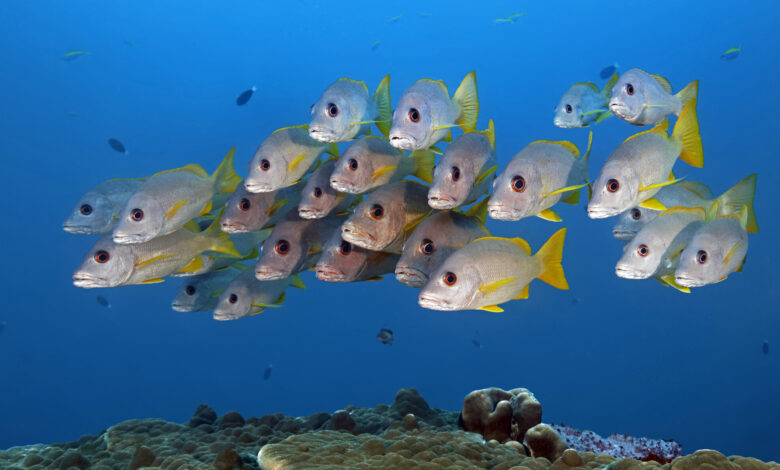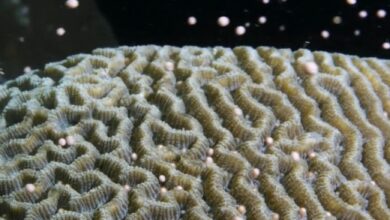
Swarm of fish Ehrenberg's Snapper (Lutjanus monostigma) swims over coral reef, Indian Ocean, North Male Atoll, Maldives. Photo Credit: ImageBroker/Norbert Probst via Getty Images
Environment USAFully Protect a Third of the World’s Ocean to Benefit… Fishing!
Launched in 2008, this ambitious project has set a brand new mission: to fully protect a third of the world’s ocean not only for the sake of biodiversity but also for fish stock that needs replenishing and carbon that needs to be stored.
“It was necessary for us to go to places that still look like the ocean as it was 500 years ago,” says Enric Sala, photographer, National Geographic Society explorer-in-residence and collaborator to the Pristine Seas project. “To go back to the best baselines we have for what a healthy ocean used to be like. These places are the blueprint. They are the instruction manual. Maybe we cannot bring all of the ocean back to this state, but these places show us what the potential is. They give us hope.”
Now that it has helped to create 22 marine reserves, the Pristine Seas project needs to address the threats of destroyed habitats, overfishing, and climate change. Since “the worst enemy of fishing is overfishing,” fully protected marine reserves can contribute to a healthier fish stock because the abundance of fish and other sea creatures spill out of the reserves and replenish the stocks available for fishing. As for the climate change problem, undisturbed sediments lock up carbon for thousands of years, storing greenhouse gas more efficiently than soil. If the fully protected parts of the ocean expend from 2.5% to 35%, biodiversity would improve by 64%, 28% of carbon would be stocked and the global fishing pond would be increased by 10 million metric tons.



